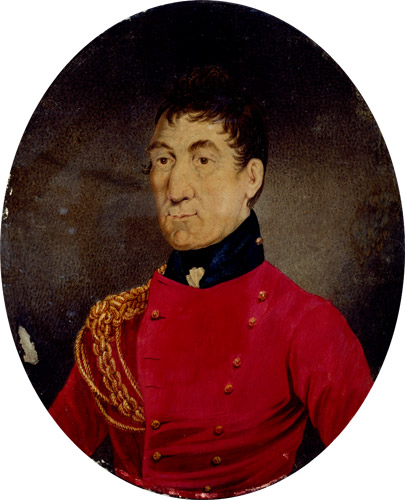Governor Macquarie
In 1809, Lachlan Macquarie was appointed fifth Governor of New South Wales. He replaced William Bligh who had been deposed by the mutinous NSW Corps in 1808. Macquarie arrived in Sydney, accompanied by his second wife, Elizabeth. Together they had a vision to lift the colony of NSW beyond its beginnings as a penal settlement.
It wasn't long before Macquarie recognised the need to expand the boundaries of the colony. He enthusiastically encouraged exploration. Blaxland, Wentworth and Lawson crossed the Blue Mountains in 1813, and John Oxley was sent on expeditions to the north coast and inland. Macquarie also established new townships on the edge of the European settlement, including Bathurst, Windsor and Richmond.
Macquarie believed in reinstating reformed convicts (emancipists) to positions of authority and influence. Francis Greenway, colonial architect, and William Redfern, colonial surgeon, are two well-known examples of this policy. He even entertained them at Government House - much to the dismay of the military and colonial gentry.
As part of his ambitious public works program, he ordered the construction of roads and bridges to link Sydney with new townships, and was responsible for the erection of over 200 churches and public buildings, many of which still are standing today.
In 1822, Macquarie returned to England, after a British government commission criticised his liberal policies and the extent of his public works program. He fought to vindicate his actions and restore his reputation. Macquarie was eventually granted a pension in 1824 but died shortly afterwards.
[Lachlan Macquarie], 1822 by Richard Read Snr
Watercolour drawing P2/144
> See a History Channel presentation on Lachlan Macquarie


